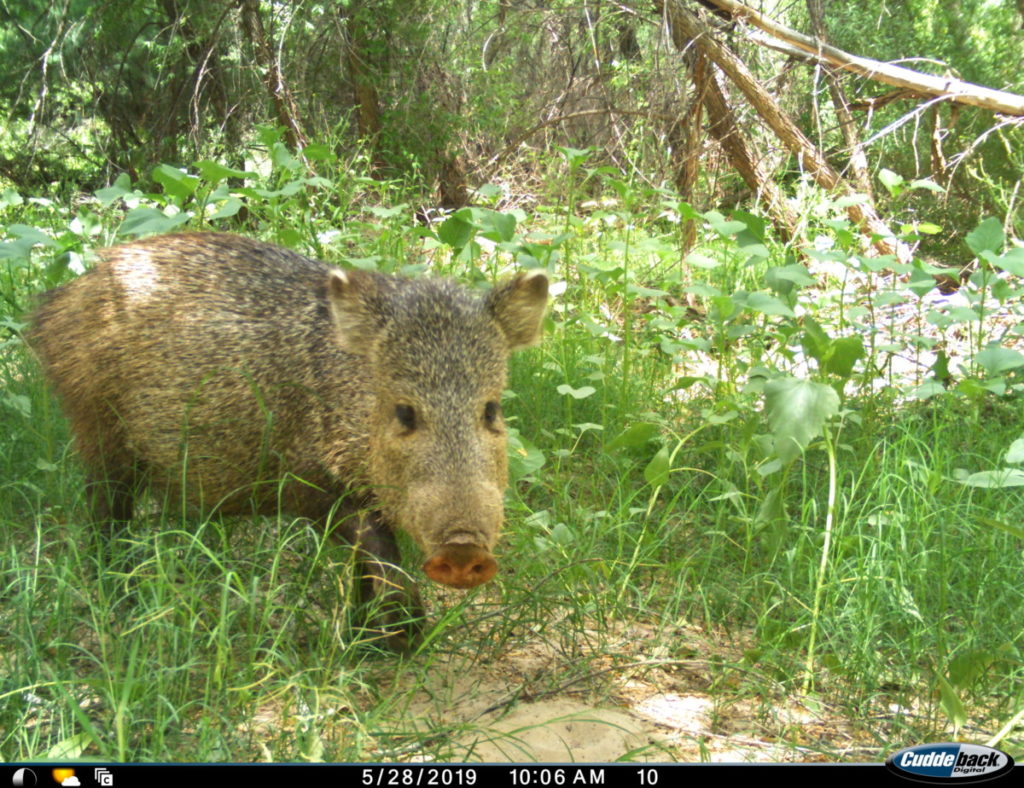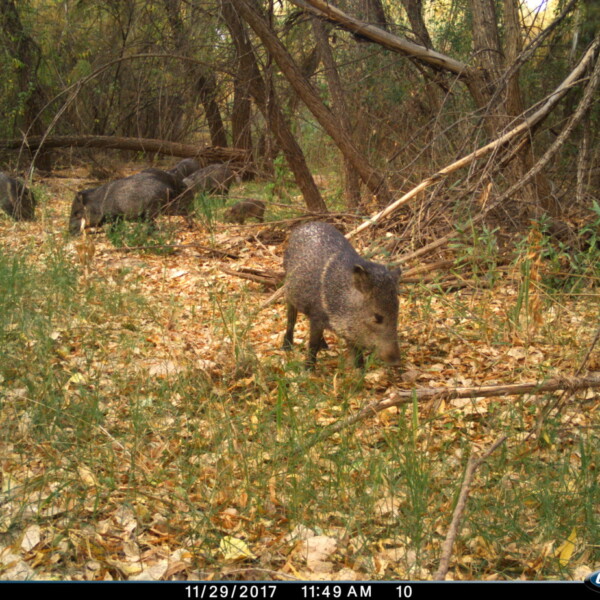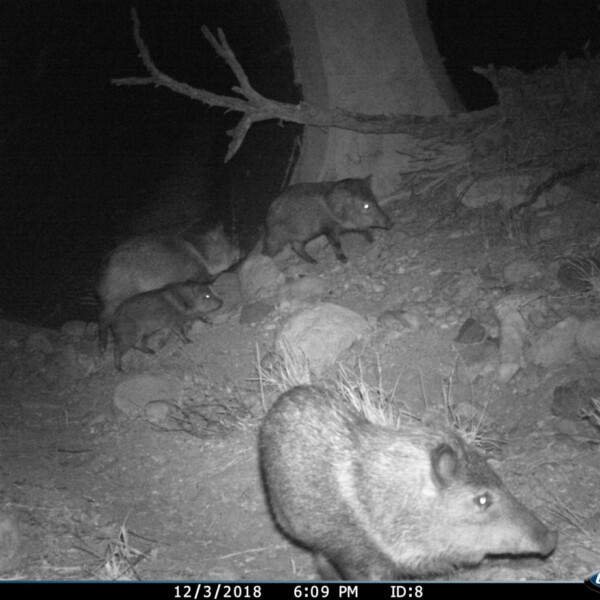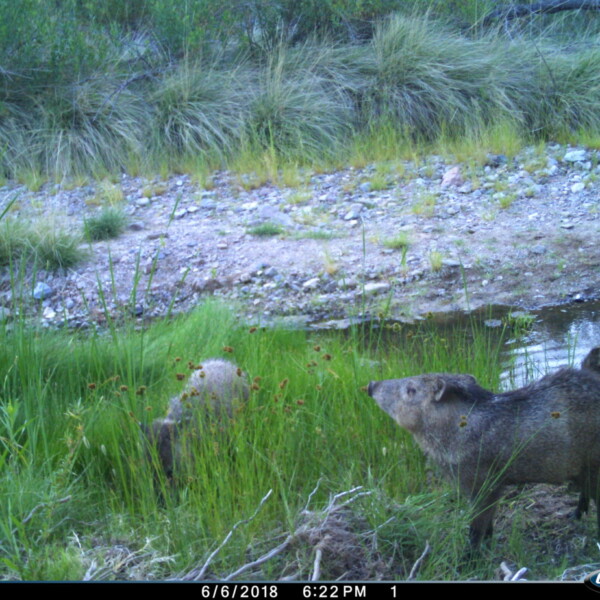The collared peccary (Pecari tajacu), or more commonly known here in the Southwest as the javelina, is a stout pig-like creature with grizzled coarse hair, long nose, and short legs. They have a white line of hair running from under their neck to their shoulders, giving them their name. The collared peccary is in the Tayassuidae family that also contains the white-lipped and Chacoan peccary and are only found in the Americas. The Tayassuidae family split off from the pig, Suidae family, 37.1 million years ago! So, they are definitely not pigs!
Javelina range from the tropical forests of South and Central America to deserts and mesquite forests of the Southwestern United States. Javelina in our region eat cacti, roots, nuts, fruit, and mesquite beans. While mainly herbivores, javelina are also known to eat small animals, eggs, and carrion if available. In the desert, a javelina’s diet is in large part dependent on agave and prickly pear because of their high-water content.
If you’ve ever seen javelina, you’ll know that they have a distinctive musky smell that comes from sent and oil glands they use to mark territory. Their long snouts allow them to have a great sense of smell, and they also have good hearing. But they have poor eyesight. So, if you ever run into javelina on the trail or in your yard make lots of noise. But don’t startle them as they probably didn’t see you there!
If you do run into javelina, there is a good chance you will see 5 to 15 individuals. Javelina are very social and eat, sleep, and travel together. Adult females can have young anytime of the year as long as there is enough food available, the family herd are very protective of their young so be respectful and leave the area if you run into a herd with young ones.





